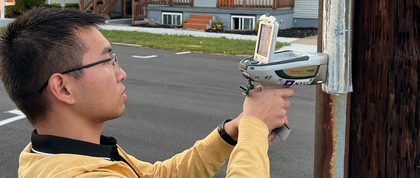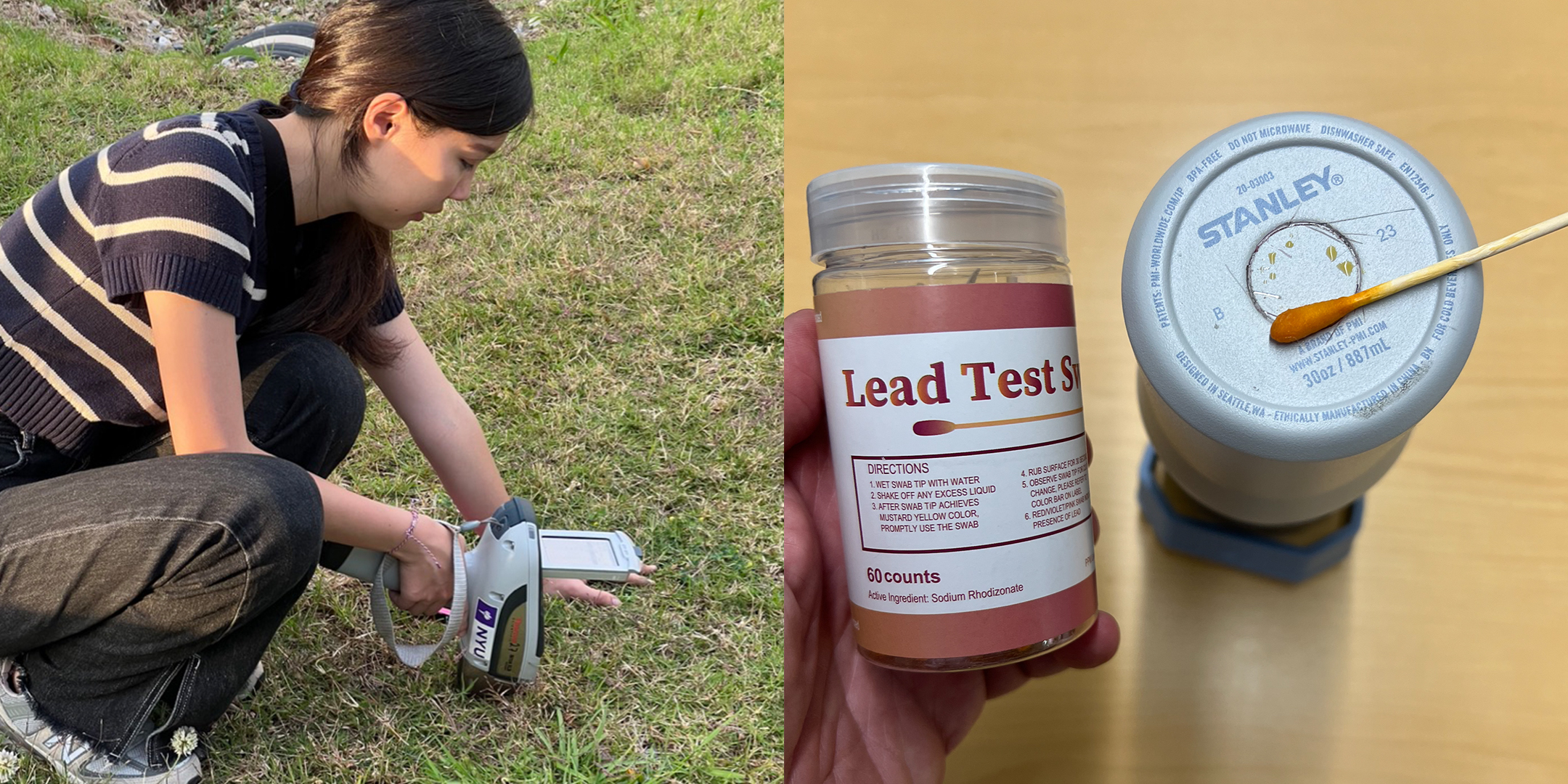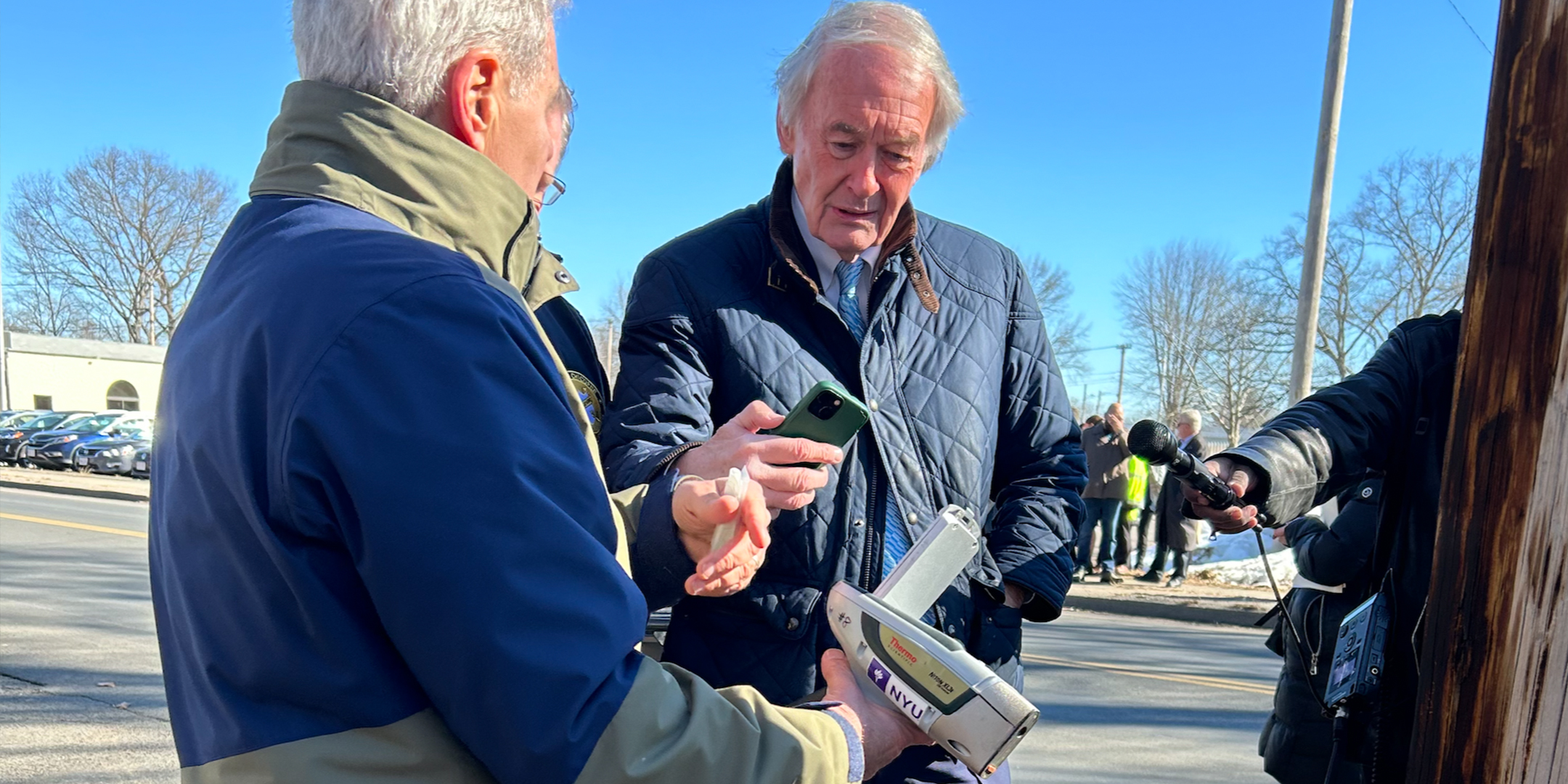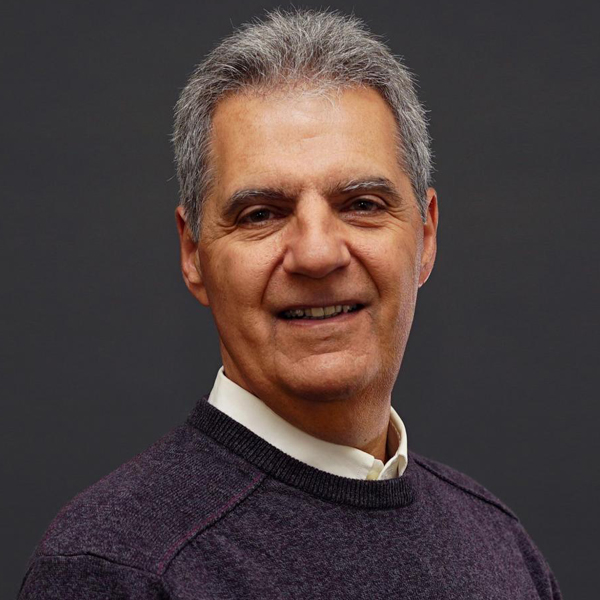
What better way to meaningfully observe Earth Month than to raise awareness of yet another threat, not only to our own health but also that of the environment — and then to resolutely take action?
A little over a year ago I received a query from a reporter at the Wall Street Journal for some technical clarification on interpreting the level of lead in soil. She was writing an article after the discovery of heavy, lead-covered communications cables traversing Lake Tahoe. These toxic cables are a health hazard, and while they’ve been installed for decades across the country, their precise numbers and locations are not known.
Seizing an opportunity, the GPH Environmental Impact Analysis (EVIA) lab was created to contribute both research and documentation of that vital information. Along with the guidance of my fellow GEH faculty members, Prince Amegbor and Bret Ericson, more than a dozen students are collaborating in an effort to identify and quantify the extent of the lead cable contamination problem in the Northeast.
You may be wondering what’s the big deal; we all know about lead in paint, plumbing fixtures, ceramics and even some consumer products (hint: Stanley tumblers, anyone?). But discovering the extent and prevalence of lead being used as a protective covering for overhead communications cables was quite a surprise — even the U.S. Environmental Protection Agency admitted as much.

There are three dimensions to this discovery. First, it's a public health issue, since high levels of lead in soil below the cables can expose children playing outside or even tracking contaminated soil into their home and schools. Second, it’s an occupational health risk: the telecommunication workers who handled these cables were exposed and may need to take additional precautions.
Perhaps the most egregious factor, though, is that it’s an environmental contamination issue, plain and simple. The owners of these lead cables are allowing the ongoing contamination of the human environment. To support mitigation efforts, lab members recently toured a lead cable site with Senator Ed Markey (D-MA), who chairs the Clean Air, Climate and Nuclear Safety subcommittee and is devising an action plan. We sampled lead in soil using NYU’s X-ray Fluorescent Heavy Metal detectors, and revealed that levels of lead underneath the hanging phone cables were approaching three times higher than Federal guidelines.

As the students and faculty in the EVIA lab continue their nationwide search for lead cables, and publicly document their environmental and health effects, the next step to be considered is investigating the global prevalence and impact of such cables. Our scholarship reflects how NYU — and GPH — would like to mark Earth Month: “decisively interdisciplinary, unquestionably global, dependent on science and technology, and crucial to our community’s ability to flourish.”

Jack Caravanos, PhD
Clinical Professor of Environmental Public Health